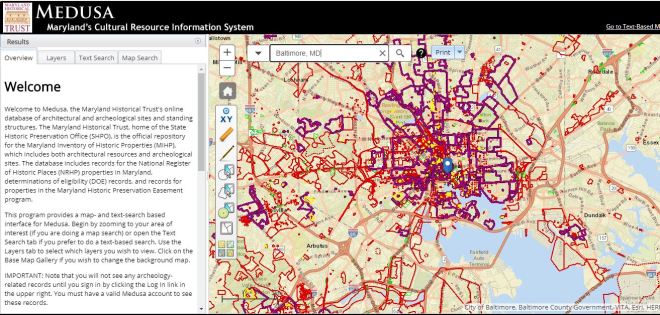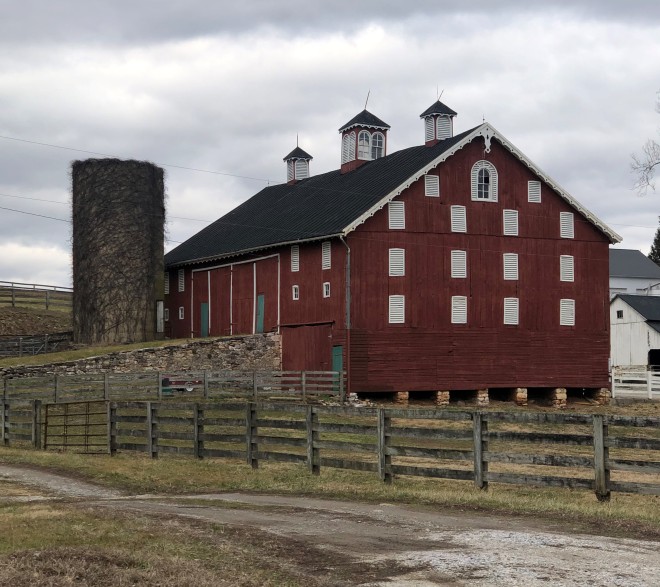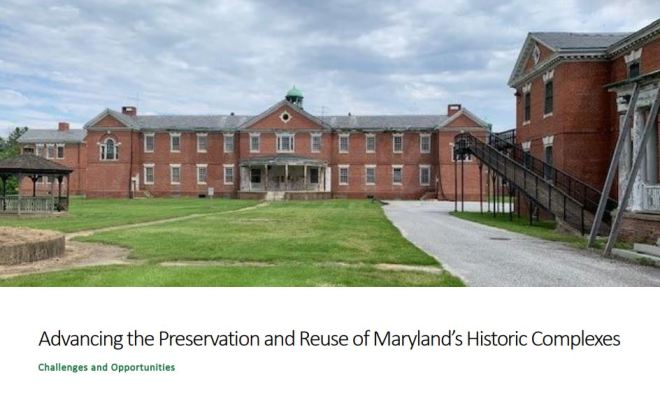By Nell Ziehl, Chief, Office of Planning, Education and Outreach
After nearly a year and a half of public meetings, hundreds of comments, drafts and redrafts and reviews, the National Park Service approved PreserveMaryland II, Maryland’s statewide preservation plan, in July 2019. The plan, which runs through 2023, serves as a guidance document for everyone engaged in historic preservation and cultural heritage activities in Maryland. As noted in the plan (Goal 4), we had hoped to have an annual meeting to report out on the Maryland Historical Trust’s activities for the year and to hear from partners and constituents about their progress. At the time, I envisioned that those meetings, held in partnership with allied organizations, would occur around the state and allow for continued transparency, while also providing us an opportunity to receive feedback and – if necessary – adjust course. Unfortunately, given the COVID-19 pandemic, we have had to put that and many other outreach meetings on hold. Instead, this May, in honor of Preservation Month, we have compiled some of our highlights from the first year, and we would love to hear from you about any projects you’d like to share!
Goal 1: Connect with Broader Audiences
In 2020 – like all of you – we have had to focus on virtual connection. Building on our previous successes with Black History Month posts, we created daily blog and social media content for Women’s History Month in March, Archeology Month in April, and Preservation Month in May. We also expanded our social media platforms to include Instagram – check us out at @mdhistoricaltrust!

MHT’s new Instagram page @mdhistoricaltrust
Responding to public feedback related to diversity and inclusion in decision-making, and in an effort to collaborate more closely with communities who may be underrepresented in the Maryland Heritage Areas Program, the Maryland Heritage Areas Authority (MHAA) worked with constituent groups and organizations, including the Governor’s Office of Community Initiatives, to remake its grants review panel. This effort included an open public recruitment and vetting to prioritize diverse backgrounds and perspectives. The first review of applications by the new panel, which makes recommendations to the MHAA for funding, is currently underway. MHAA is also in the process of convening a working group to address issues of diversity and inclusion. The working group will be made up of MHAA members, local heritage area staff, and representatives from the Governor’s Ethnic and Cultural Commissions.
Goal 2: Improving the Framework for Preservation
By popular request, MHT has continued to make enhancements to its grants programs to improve accessibility and ease of use. In 2019 and 2020, we eliminated the financial reporting requirement to provide proof of payment and allowed most extensions and amendments to be processed via email. MHAA, which has by far the largest pool of funding among the MHT-administered grant programs, has instituted a “spot check” system, requiring grantees to retain financial information but only provide it for review if randomly selected. These changes add up to dramatic time savings and reduced burden for grantees. MHAA is also evaluating the ability to reduce or eliminate match requirements, as the Certified Local Government program has done, with the goal of expanding access to funding for those organizations that may need it most.

Medusa will soon have enhanced searching capacity to improve research.
Following the successful launch of the Medusa application, which made the state’s cultural resources information available in a map-based, user-friendly format, MHT is continuing to expand its online research and service capacity. We are currently working on enhanced searchability of Medusa data (for example, to allow searches by architectural category or dates) and, even before the pandemic hit, we had started developing an online submission form for historic preservation project review and compliance.
Goal 3: Expand and Update Documentation
Many of PreserveMaryland II’s strategies to expand and update documentation address gaps in our data related to marginalized communities. In 2019 and 2020, we have partnered with Preservation Maryland on a project to research LGBTQ history in Maryland, which will result in a historic context study for the state, as well as in-depth documentation of properties associated with the LGBTQ community in Montgomery County and Baltimore City. We have also received funding from the National Park Service to support research into the Women’s Suffrage movement around the state, as well as funds from the MHT Board of Trustees to support an internship focused on a historic context of Chinese Americans in Baltimore.

Carroll County dairy barn. Photo credit: Marcia Miller
MHT recently embarked on an effort with the University of Delaware’s Center for Historic Architecture and Design to document historic dairy farms in Cecil, Carroll, and Frederick counties over the next two years. Learn more about the project here.
Goal 4: Build Capacity and Strengthen Networks
Although we have not been able to move forward with many of the workshops and trainings proposed under this goal, we have been responsive to the COVID-19 situation in a variety of ways. We have translated our grants workshops into webinars and held public meetings using platforms such as WebEx. MHT and MHAA surveyed cultural heritage organizations and institutions to assess COVID-19 impacts, and MHAA initiated an emergency grant round in response. (Learn more about the Maryland Heritage Areas Program’s COVID-19 response here.) At Jefferson Patterson Park and Museum, our staff have worked hard to produce virtual educational opportunities, including “STEAM Sunday,” “Plant of the Week,” and a “Lunchtime Learning” series on Facebook Live.

To build awareness of historic preservation and cultural resources in new professional circles, MHT developed and produced trainings related to climate change and cultural heritage for Maryland’s Climate Leadership Academy and for the 2019 APA Maryland conference. Following the 2019 release of Planning for Maryland’s Flood-Prone Archeological Resources, MHT will be developing new trainings for local governments and archaeologists interested in the topic.
Goal 5: Collaborate Toward Shared Objectives
Recognizing the challenges inherent in the redevelopment of formerly government-owned historic campuses in Maryland, and following the passage of Senate Bill 741 in 2019, the Maryland Department of Planning contracted with a team consisting of Widell Preservation Services, LLC; BAE Urban Economics, Inc.; and Sparks Engineering, Inc. to study this issue and provide recommendations. The resulting report, Advancing the Preservation and Reuse of Maryland’s Historic Complexes, identified completed campus reuse projects in our state and beyond, evaluating their effectiveness and proposing measures which could improve the redevelopment of such projects in Maryland in the future. A steering committee for the project, chaired by Rob McCord, Secretary of Planning, included Senator Katie Fry Hester; Delegate Regina Boyce; Nick Redding, Executive Director of Preservation Maryland, and John Renner, Vice President of Development at Cross Street Partners. Other agency partners also took part in monthly meetings of the steering committee.

January 2020 report issued to Planning on the redevelopment of former campuses
Following PreserveMaryland II objectives and strategies, MHT has partnered with the Maryland Department of Natural Resources to conduct architectural and archeological assessments of DNR-controlled properties. Recent survey locations include Billingsley, the core of a 700 acre land grant patented in the 1660s to Major John Billingsley and the last documented location of the Mataponi and Patuxent Indians in the Archives of Maryland (Prince George’s County); Fishing Bay, the focus of a Historic Preservation Non-Capital Grant from MHT to the Chesapeake Watershed Archaeological Research Foundation to complete a coastal archaeological survey of the watershed (Dorchester County); and Fort Frederick State Park, where a team discovered cultural resources associated with the 1930s Civilian Conservation Corps camp that housed the workers who restored Fort Frederick, as well as a road trace that may indicate where a small colonial town was positioned (Washington County).
We hope you enjoyed our virtual #PreservationMonth this May and look forward to hosting our 2021 preservation plan update in person! Thanks for everything you do to advance historic preservation and cultural heritage in Maryland.
